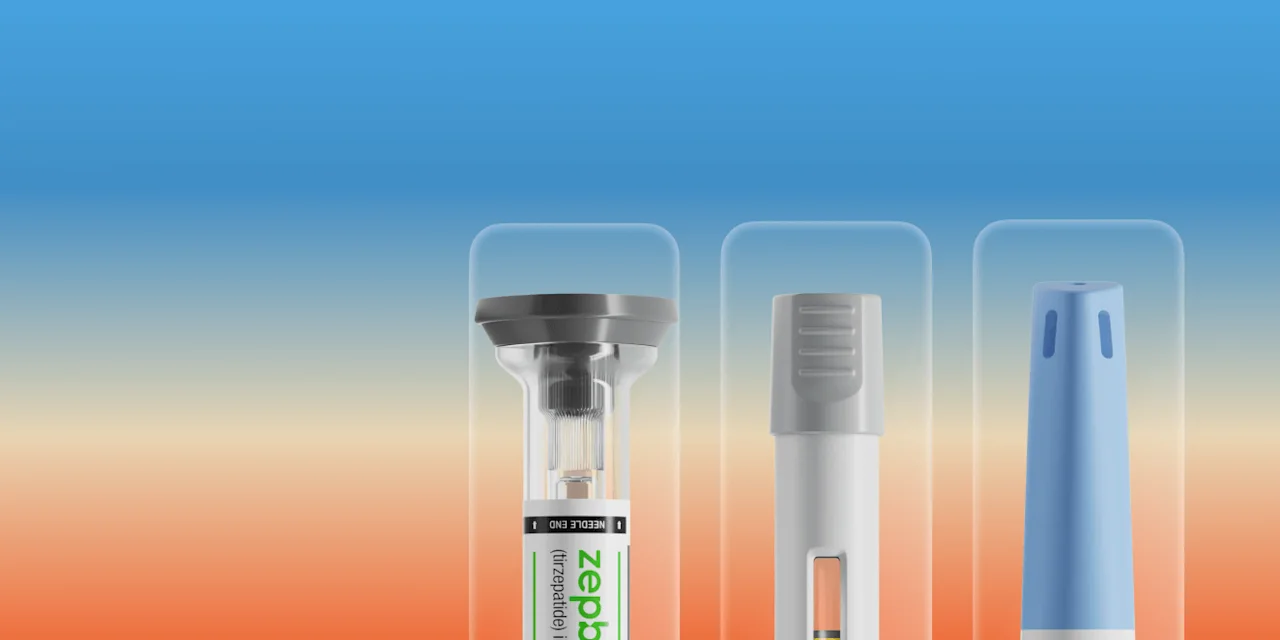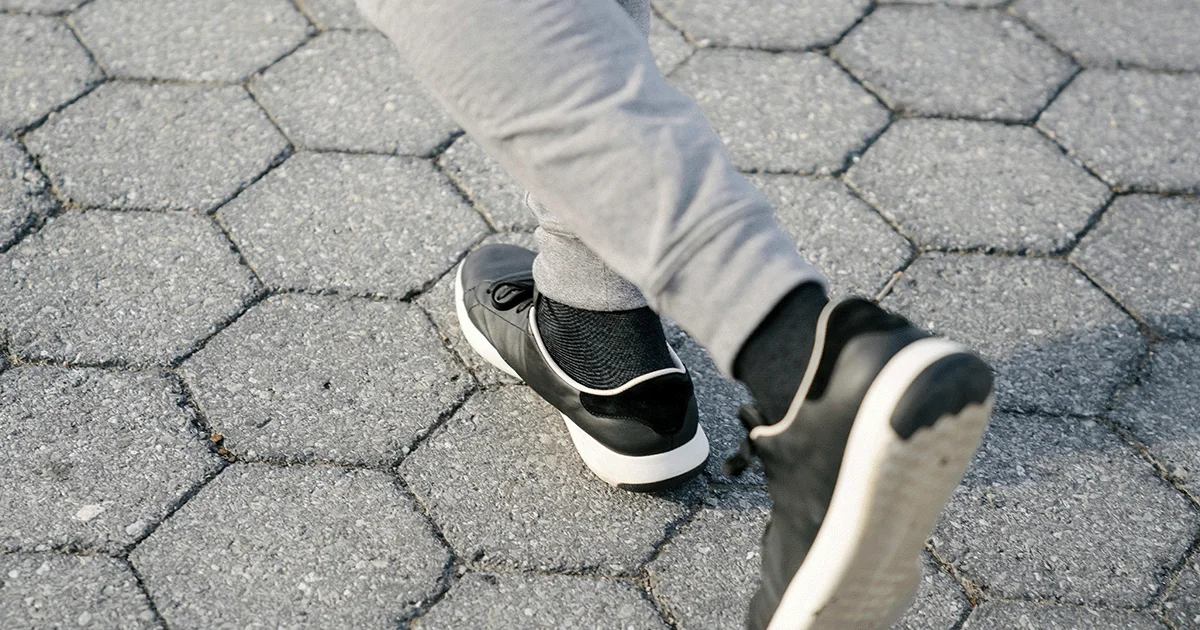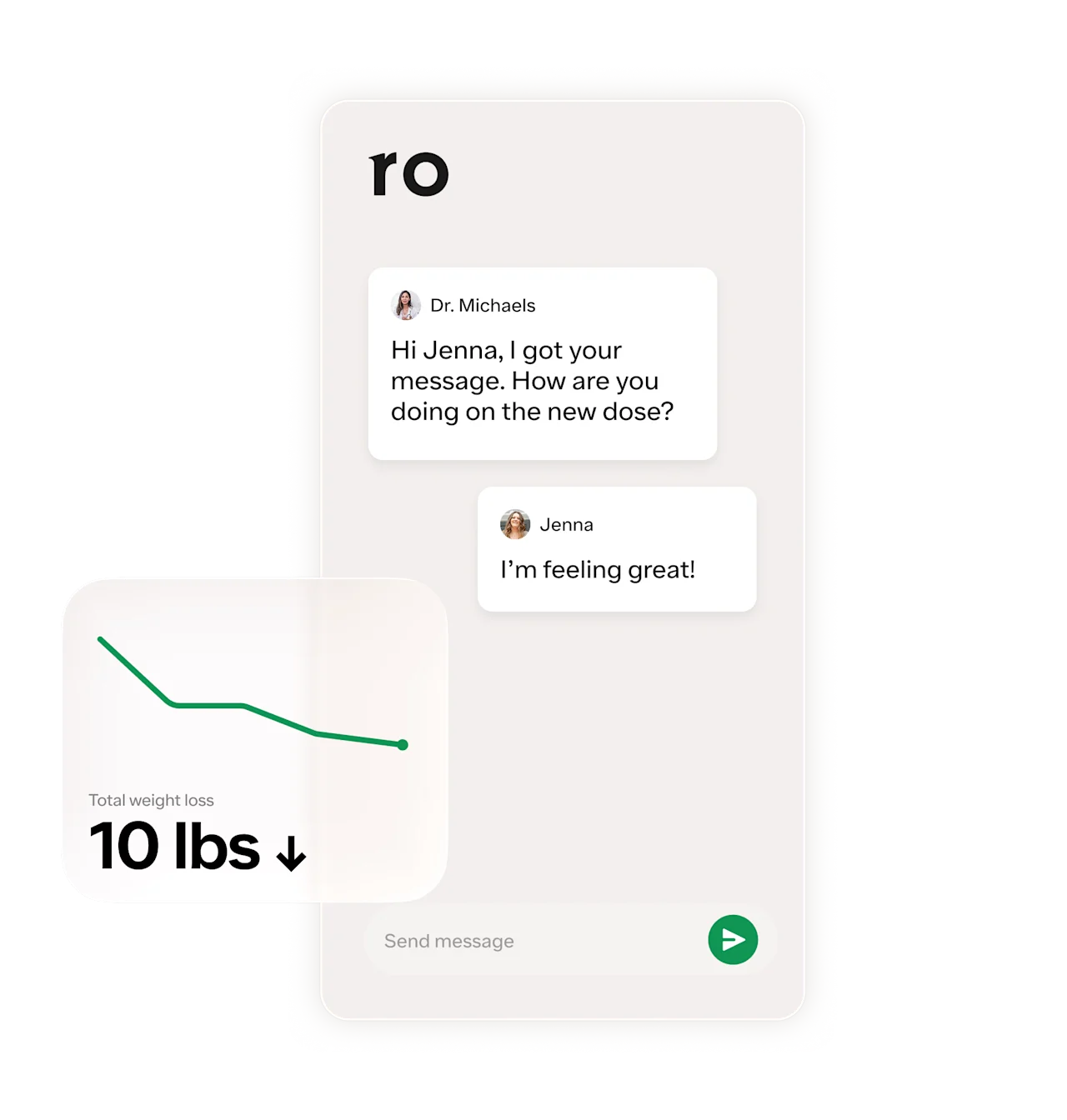Key takeaways
Recent clinical trials suggest that tirzepatide, the active ingredient in Mounjaro and Zepbound, may relieve symptoms of sleep apnea by half in people with obesity and obstructive sleep apnea (OSA).
After taking tirzepatide for one year, study participants experienced a significant reduction in OSA symptoms as well as an average weight loss of 18–20%.
Eli Lilly, the manufacturer of Zepbound and Mounjaro, has submitted the results to the FDA , which may lead to another treatment option for people with OSA and obesity.
Here's what we'll cover
Here's what we'll cover
Here's what we'll cover
Key takeaways
Recent clinical trials suggest that tirzepatide, the active ingredient in Mounjaro and Zepbound, may relieve symptoms of sleep apnea by half in people with obesity and obstructive sleep apnea (OSA).
After taking tirzepatide for one year, study participants experienced a significant reduction in OSA symptoms as well as an average weight loss of 18–20%.
Eli Lilly, the manufacturer of Zepbound and Mounjaro, has submitted the results to the FDA , which may lead to another treatment option for people with OSA and obesity.
Today, tirzepatide is known as the active ingredient in diabetes medication Mounjaro and weight loss drug Zepbound. But it may soon have another health condition to add to its treatment resume: obstructive sleep apnea (OSA). Recent clinical trials from Eli Lilly, the manufacturer of both drugs, suggest that tirzepatide can relieve symptoms of OSA by up to half in people with obesity and OSA.
Does this mean tirzepatide can be prescribed as an approved treatment for sleep apnea? Not quite—at least not yet. But the results seem to be promising and reveal yet another potential benefit ofZepbound or Mounjaro, especially considering that experts estimate that about 80% of people with moderate to severe OSA remain undiagnosed.
Keep reading to learn more about the potential of tirzepatide for sleep apnea, the relationship between weight (especially obesity) and OSA, and more.
Can tirzepatide (Zepbound, Mounjaro) reduce sleep apnea symptoms?
OSA is the most common sleep disorder worldwide, affecting around 1 billion people globally, including up to 30% of American men and up to 17% of American women. The condition interrupts your breathing during sleep, disrupting the quality of your shut-eye and causing loud snoring, choking, or gasping sounds—even if you don’t consciously wake up. Because it happens while you’re asleep, experts estimate that more than 80% of people with moderate-to-severe OSA don’t even know they have it, and therefore probably aren’t getting treatment for it.
Tirzepatide may help relieve those symptoms, according to the results of two new clinical trials. Both studies were spearheaded by Eli Lilly and focused on the ability of tirzepatide to reduce sleep apnea symptoms. In the research (and in general), the severity of OSA symptoms were measured by the apnea-hypopnea index (AHI), which records the number of times a person’s airflow is fully or partially blocked per hour of sleep.
The first trial observed the effects of taking tirzepatide for one year in people with obesity and untreated moderate-to-severe OSA who did not use positive airway pressure (PAP) therapy (the first-line treatment for OSA). At the beginning of the study, the participants had an average AHI of 51.5 events per hour. By the end of 52 weeks, participants experienced an average reduction of 25.3 events per hour with tirzepatide. Participants taking tirzepatide also lost just over 18% of their body weight. By comparison, there was only an average reduction of 5.3 events per hour for placebo and a 1.3% weight loss for placebo in this trial.
The second trial had a similar setup, except that it observed the effects of tirzepatide among people who also used positive airway pressure (PAP) therapy to treat their OSA. For these individuals, their average AHI reduced by 29.3 events per hour with tirzepatide from a baseline level of 49.5 events per hour. Participants taking tirzepatide also lost just over 20% of their body weight. With placebo, there was only an average reduction of 5.5 events per hour with placebo and 2.3% weight loss.
At the end of both trials, 43% (study 1) and 51.5% (study 2) of participants treated with the highest dose of tirzepatide met the criteria for “disease resolution.” Meaning, they had an AHI of fewer than 5 events per hour or an AHI of 5-14 events per hour and an Epworth Sleepiness Scale (ESS) score of ≤10. ESS is a questionnaire that assesses daytime sleepiness.
In both trials, participants were prescribed 10 or 15 mg of tirzepatide, the two highest maintenance dosages of the drug, or a placebo. There were a total of 469 participants, approximately 70% of whom were male and 30% of whom were female, hailing from around the world. The reported side effects were similar to those found in other clinical trials of tirzepatide: digestive in nature. The most common ones included diarrhea, nausea, vomiting, and constipation. As for publication, the abstract of the research findings have been published in the New England Journal of Medicine.
OSA is a comorbidity of obesity, which means that people often have both conditions at the same time. Not only that, but obesity is the number one risk factor for OSA, with approximately 60% of moderate-to-severe cases attributable to obesity.
OSA can develop from upper airway obstruction; when your airways are obstructed, it is difficult to keep breathing as fully as you should. Many things can contribute to obstruction of the airways during sleep, including a larger neck, larger tongue, and excess fat in the area. All of these can increase the pressure on the airway, causing it to collapse, and are more common with obesity. Muscle tone can also play a role, with collapse being more likely to occur if the upper airway muscle tone decreases. Plus, when lying down, the excess fat around the abdomen places additional pressure on the lungs, which can reduce their volume and the oxygen received while sleeping.
While obesity raises the risk of sleep apnea, the poor sleep quality caused by OSA can, in turn, contribute to obesity. Because you are so exhausted during the day, you have less energy and motivation, which makes it harder to be physically active and exercise—even though exercise can reduce symptoms of OSA. Unhealthy eating behaviors and poor diet choices can also worsen OSA, both of which you may be more likely to engage in if you’re lacking shut-eye (think: feeling unmotivated and tired).
Even if OSA doesn’t wake you up, the sleep disruptions can take their toll on your waking hours, impairing mental and physical function as well as quality of life. Beyond leading to excessive sleepiness during the day, OSA often overlaps with and increases your risk for other serious health conditions, including depression, cardiovascular disease, and even cancer. People with OSA are also more likely to have type 2 diabetes and/or obesity—the two conditions that tirzepatide is already approved for from the US Food and Drug Administration (FDA) to treat. That’s partly what makes these recent findings so exciting.
How can weight loss improve sleep apnea?
Given the link between obesity and OSA, health providers often recommend weight loss as part of the treatment plan for OSA. And while studies have found that weight loss may not completely eliminate OSA, it can significantly reduce most major symptoms, including AHI and daytime drowsiness. Reducing these can, in turn, alleviate many of the secondary concerns that can occur with OSA, such as drowsy driving and cognitive impairment due to sleepiness.
So, what does this all mean?
As of mid-June, Eli Lilly said that it has submitted the results of the clinical trials to the FDA. The company has already received FDA Fast Track designation (an accelerated path to development, testing, and approval of drugs so drugs can reach the market sooner) for tirzepatide as a potential treatment for people with moderate-to-severe OSA and obesity. So, it’s possible that we could see a new version of tirzepatide on the shelves soon. The company may release the OSA version under a different brand name, as it did for Mounjaro and Zepbound.
If the FDA approves tirzepatide to treat moderate-to-severe OSA and obesity, that would make it the first pharmaceutical treatment for OSA. Currently, the first-line treatment for the sleep disorder is continuous positive airway pressure (CPAP) therapy. CPAP therapy requires a person to wear a mask while they sleep, which is connected via tubing to a machine that delivers a continuous stream of air pressure, keeping the airways open so they don’t collapse. While CPAP can be very effective at treating OSA, it’s often considered uncomfortable and difficult to use by patients. So many people (up to 75%) don’t use it consistently and some prefer not to use it at all. Having an alternative option such as tirzepatide to offer patients could make a big difference in treatment outcomes.
Currently, tirzepatide is only FDA-approved to treat type 2 diabetes (in the case of Mounjaro) and obesity and overweight (in the case of Zepbound). While diabetes medications are typically covered by insurance when prescribed to those with the condition, weight loss meds aren’t always approved, leaving those who are prescribed tirzepatide for weight management stuck paying out of pocket for the medication. And, the out-of-pocket cost for these medications is steep. Zepbound, for instance, can cost upwards of $1,000. While there are savings programs available for both medications, the high price tag can put them out of reach for many folks who need treatment. If the FDA approves sleep apnea as an additional treatment indication for tirzepatide, that may offer another route for eligible individuals to get the medication covered through their insurance.
Bottom line: Right now, we don’t know what the future holds (unless, of course, you’re psychic and, in that case, good for you!). All we know is that these latest clinical trials show promise that tirzepatide can not only control type 2 diabetes and produce weight loss, but it also may have the power to treat OSA in people who also have obesity, potentially offering relief to the millions of people with the sleep disorder as well.
DISCLAIMER
If you have any medical questions or concerns, please talk to your healthcare provider. The articles on Health Guide are underpinned by peer-reviewed research and information drawn from medical societies and governmental agencies. However, they are not a substitute for professional medical advice, diagnosis, or treatment.
Mounjaro Important Safety Information: Read more about serious warnings and safety info.
Zepbound Important Safety Information: Read more about serious warnings and safety info.
References
Atul M., R., Grunstein, R. R., Fietze, I., et al. (2024) Tirzepatide for the Treatment of Obstructive Sleep Apnea and Obesity. New England Journal of Medicine. doi: 10.1056/NEJMoa2404881. Retrieved from https://www.nejm.org/doi/full/10.1056/NEJMoa2404881
Carneiro-Barrera, A., Amaro-Gahete, F. J., Díaz-Román, A., et al. (2019). Interdisciplinary Weight Loss and Lifestyle Intervention for Obstructive Sleep Apnoea in Adults: Rationale, Design and Methodology of the INTERAPNEA Study. Nutrients, 11(9), 2227. doi:10.3390/nu11092227. Retrieved from https://www.ncbi.nlm.nih.gov/pmc/articles/PMC6770131/
ClinicalTrials.gov. (2024). Obstructive Sleep Apnea Master Protocol GPIF: A Study of Tirzepatide (LY3298176) in Participants With Obstructive Sleep Apnea (SURMOUNT-OSA). National Library of Medicine. Retrieved from https://clinicaltrials.gov/study/NCT05412004
Coman, A. C., Borzan, C., Vesa, C. S., et al. (2016). Obstructive sleep apnea syndrome and the quality of life. Clujul Medical (1957), 89(3), 390–395. doi:10.15386/cjmed-593. Retrieved from https://www.ncbi.nlm.nih.gov/pmc/articles/PMC4990435/
Eli Lilly. (2024). Tirzepatide reduced sleep apnea severity by up to nearly two-thirds in adults with obstructive sleep apnea (OSA) and obesity. Lilly Investors. Retrieved from https://investor.lilly.com/news-releases/news-release-details/tirzepatide-reduced-sleep-apnea-severity-nearly-two-thirds
Eli Lilly. (2024). Lilly's tirzepatide reduced obstructive sleep apnea (OSA) severity, with up to 51.5% of participants meeting the criteria for disease resolution. Lilly Investors. Retrieved from https://investor.lilly.com/news-releases/news-release-details/lillys-tirzepatide-reduced-obstructive-sleep-apnea-osa-severity
Farzam, K. & Patel, P. (2024). Tirzepatide. StatPearls. Retrieved from https://www.ncbi.nlm.nih.gov/books/NBK585056/
Gozal, D., Ham, S. A., & Mokhlesi, B. (2016). Sleep Apnea and Cancer: Analysis of a Nationwide Population Sample. Sleep, 39(8), 1493–1500. doi:10.5665/sleep.6004. Retrieved from https://www.ncbi.nlm.nih.gov/pmc/articles/PMC4945307/
Jehan, S., Myers, A. K., Zizi, F., et al. (2018). Obesity, obstructive sleep apnea and type 2 diabetes mellitus: Epidemiology and pathophysiologic insights. Sleep Medicine and Disorders: International Journal, 2(3), 52–58. Retrieved from https://www.ncbi.nlm.nih.gov/pmc/articles/PMC6112821/
Li, M., Zou, X., Lu, H., et al. (2023). Association of sleep apnea and depressive symptoms among US adults: a cross-sectional study. BMC Public Health, 23(1), 427. doi:10.1186/s12889-023-15358-8. Retrieved from https://www.ncbi.nlm.nih.gov/pmc/articles/PMC9987095/
Muraki, I., Wada, H., & Tanigawa, T. (2018). Sleep apnea and type 2 diabetes. Journal of Diabetes Investigation, 9(5), 991–997. doi:10.1111/jdi.12823. Retrieved from https://www.ncbi.nlm.nih.gov/pmc/articles/PMC6123041/
Silva, R. P. D., Martinez, D., Bueno, K. S. D. S., et al. (2019). Effects of exercise on sleep symptoms in patients with severe obstructive sleep apnea. Jornal Brasileiro de Pneumologia: Publicacao Oficial da Sociedade Brasileira de Pneumologia e Tisilogia, 45(3), e20180085. doi:/10.1590/1806-3713/e20180085. Retrieved from https://www.ncbi.nlm.nih.gov/pmc/articles/PMC6715025/
Slowik, J. M., Sankari, A., & Collen, J. F. (2024). Obstructive Sleep Apnea. StatPearls. Retrieved Jun. 25, 2024 from https://www.ncbi.nlm.nih.gov/books/NBK459252/
US Food & Drug Administration (FDA-a). (2024). Always Tired? You May Have Sleep Apnea. Retrieved from https://www.fda.gov/consumers/consumer-updates/always-tired-you-may-have-sleep-apnea
US Food & Drug Administration (FDA). (2023). Highlights of Prescribing Information: Mounjaro (tirzepatide) injection, for subcutaneous use. Retrieved from https://www.accessdata.fda.gov/drugsatfda_docs/label/2023/215866Orig1s002s006lbl.pdf
US Food & Drug Administration (FDA-b). (2024). Highlights of Prescribing Information: Zepbound (tirzepatide) injection, for subcutaneous use. Retrieved from https://www.accessdata.fda.gov/drugsatfda_docs/label/2024/217806s003lbl.pdf
Yacoub, M., Youssef, I., Salifu, M. O., et al. (2017). Cardiovascular Disease Risk in Obstructive Sleep apnea: An Update. Journal of Sleep Disorders & Therapy, 7(1), 283. doi:10.4172/2167-0277.1000283. Retrieved from https://www.ncbi.nlm.nih.gov/pmc/articles/PMC5891150/













